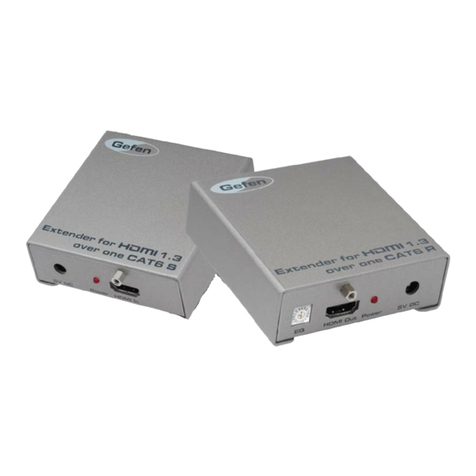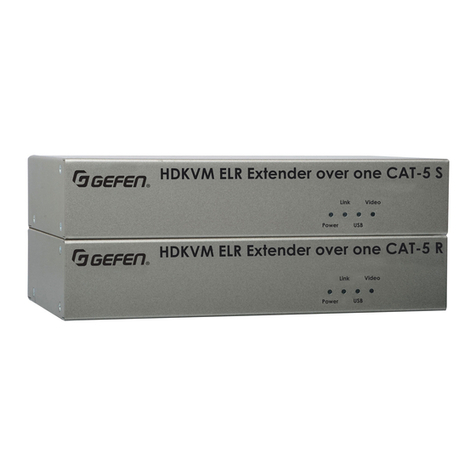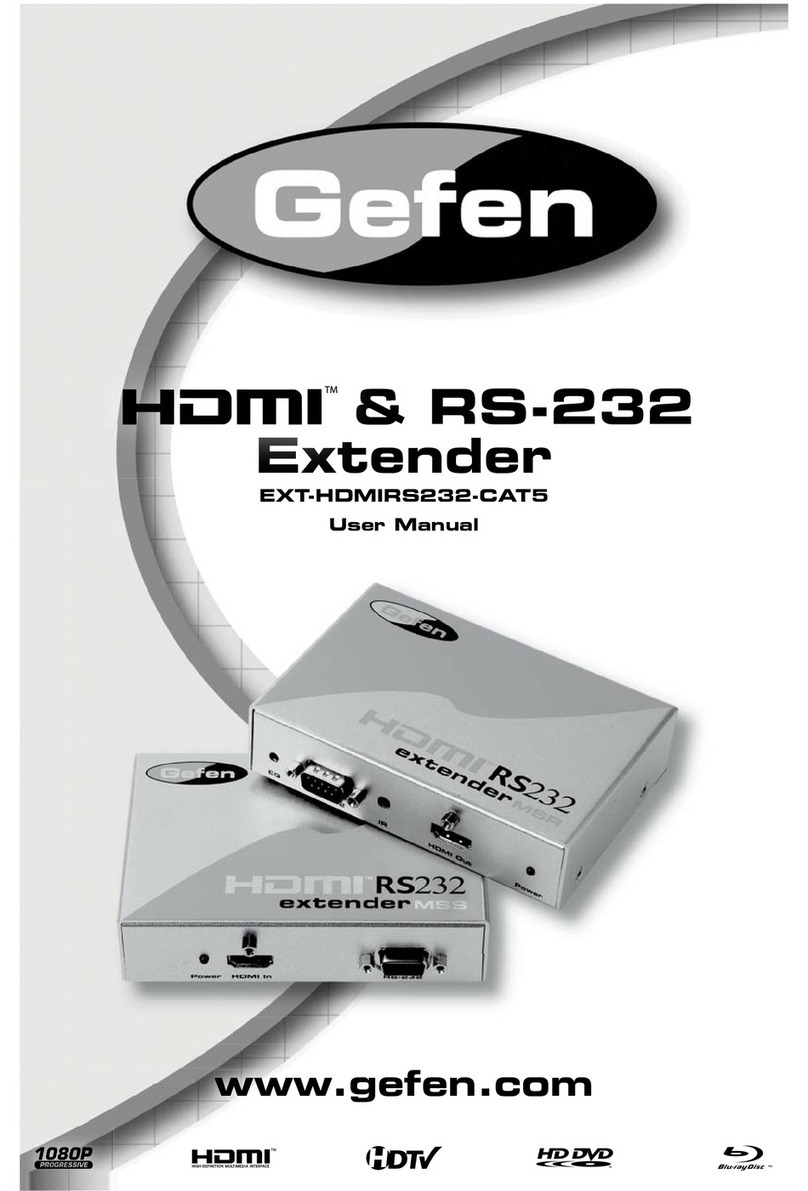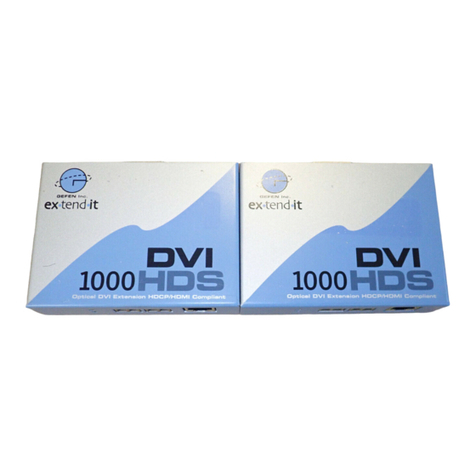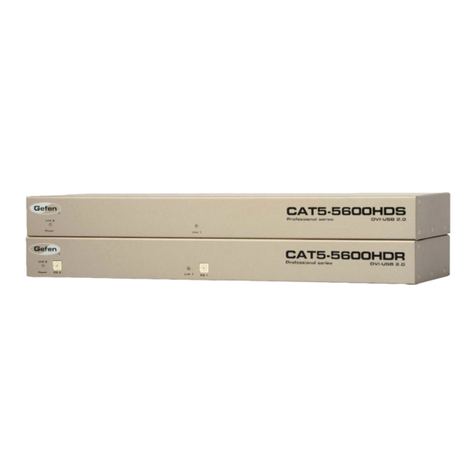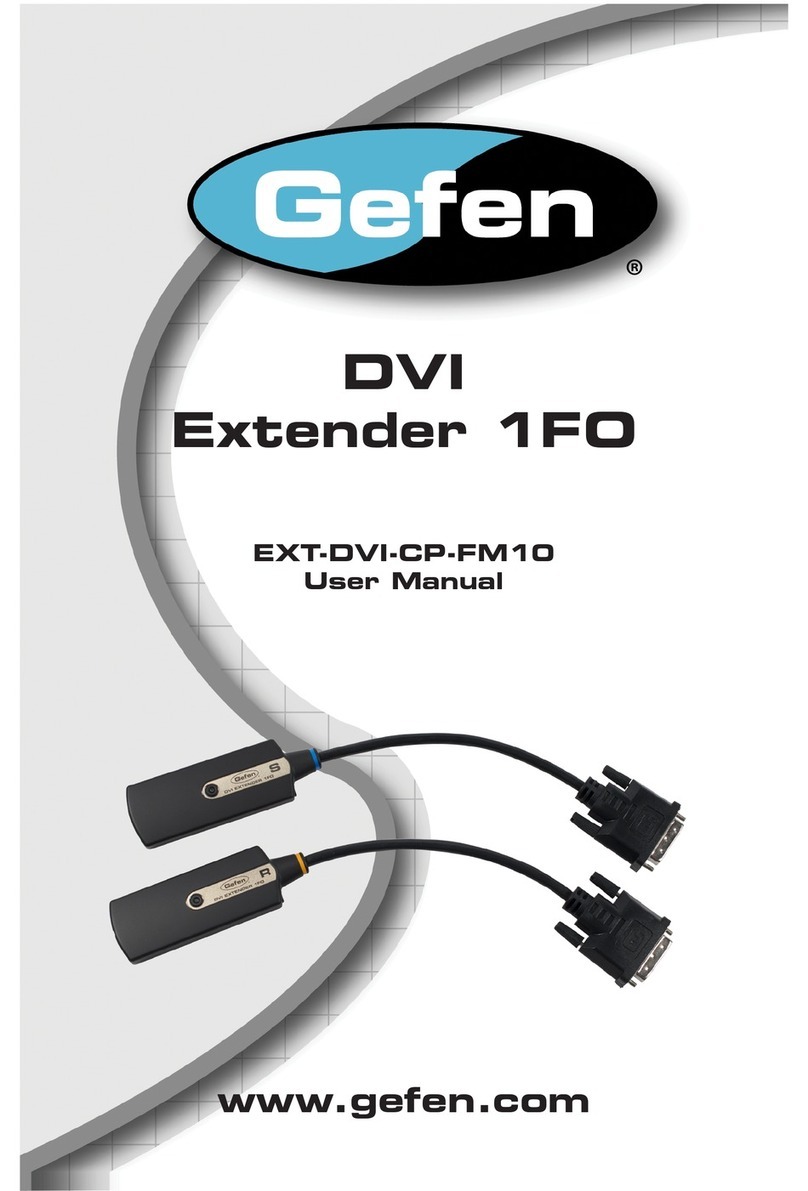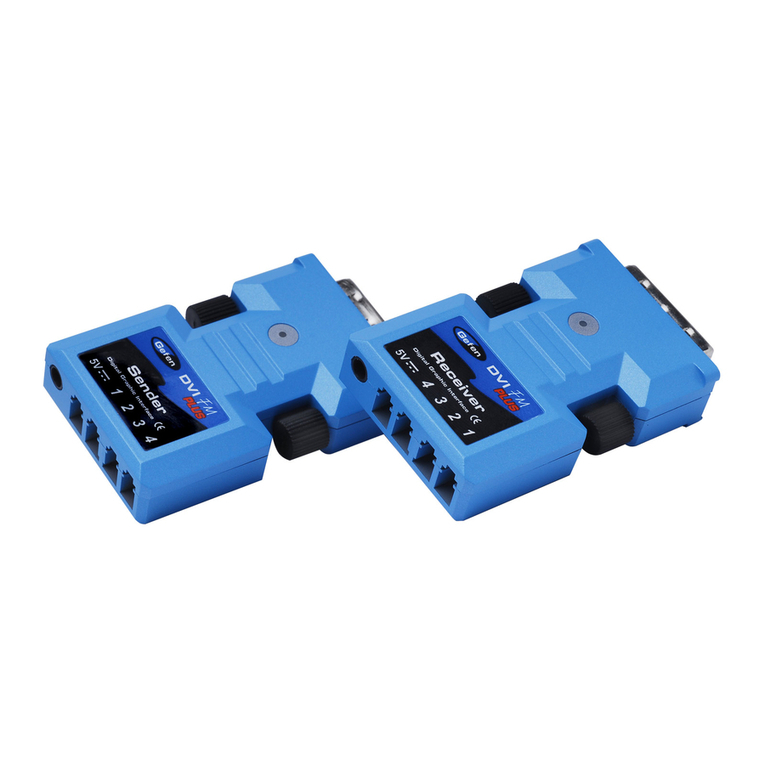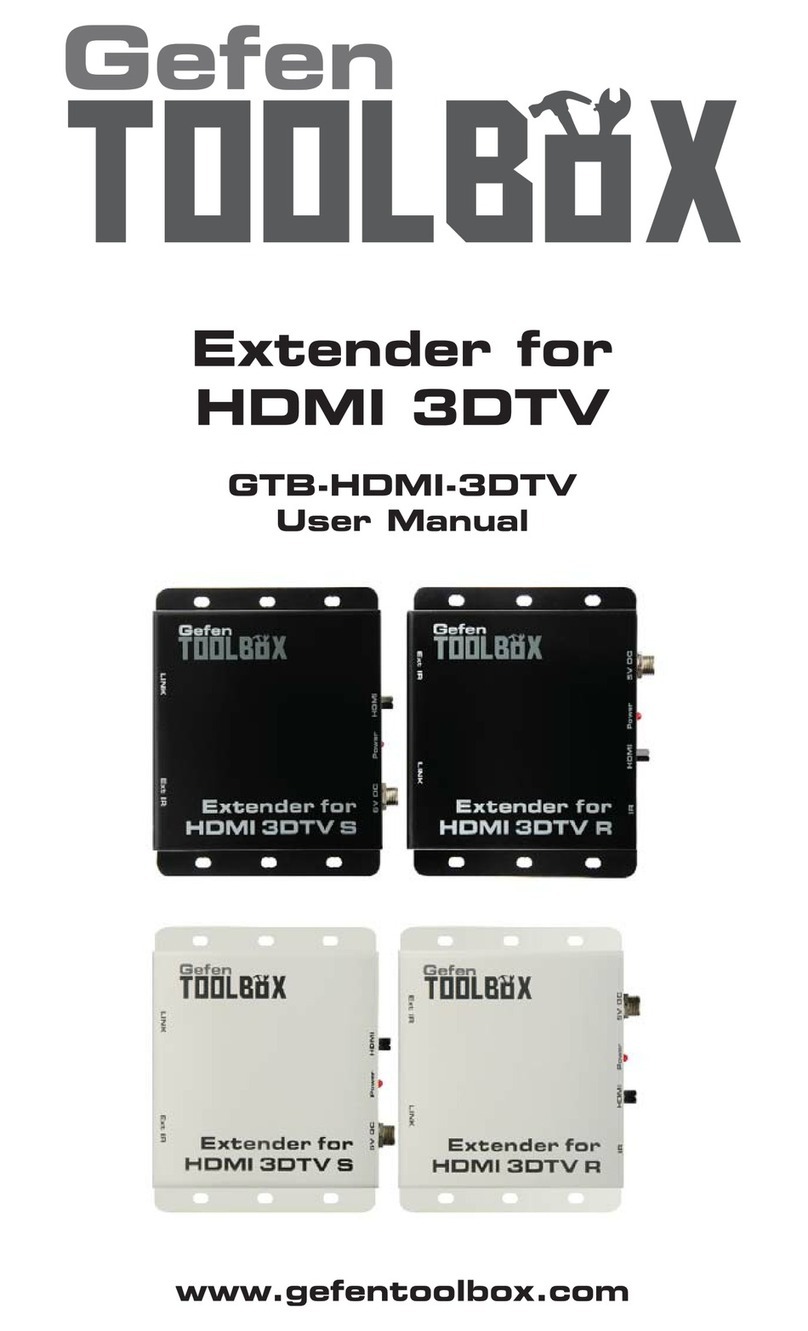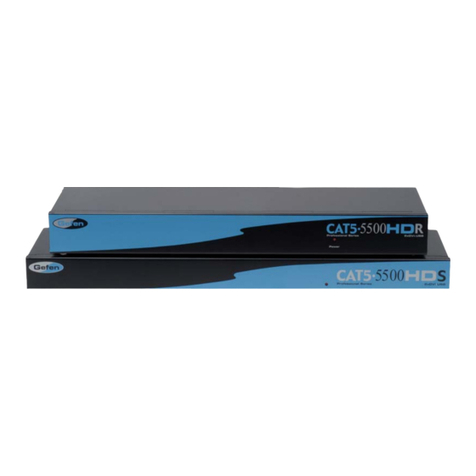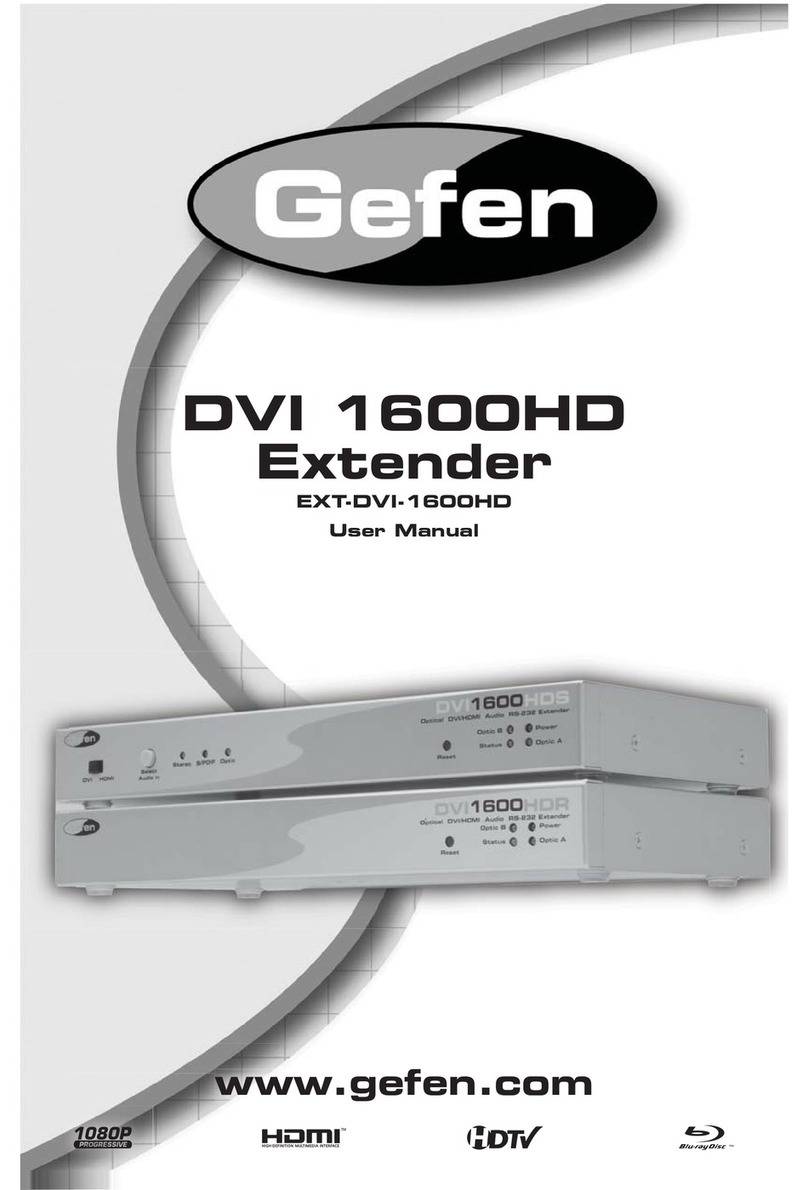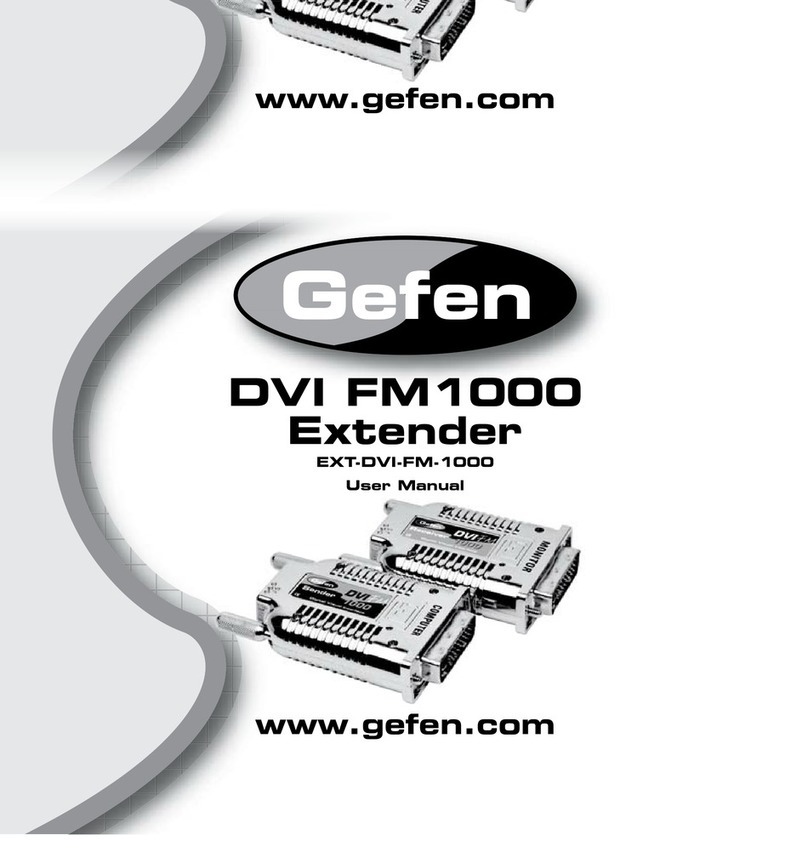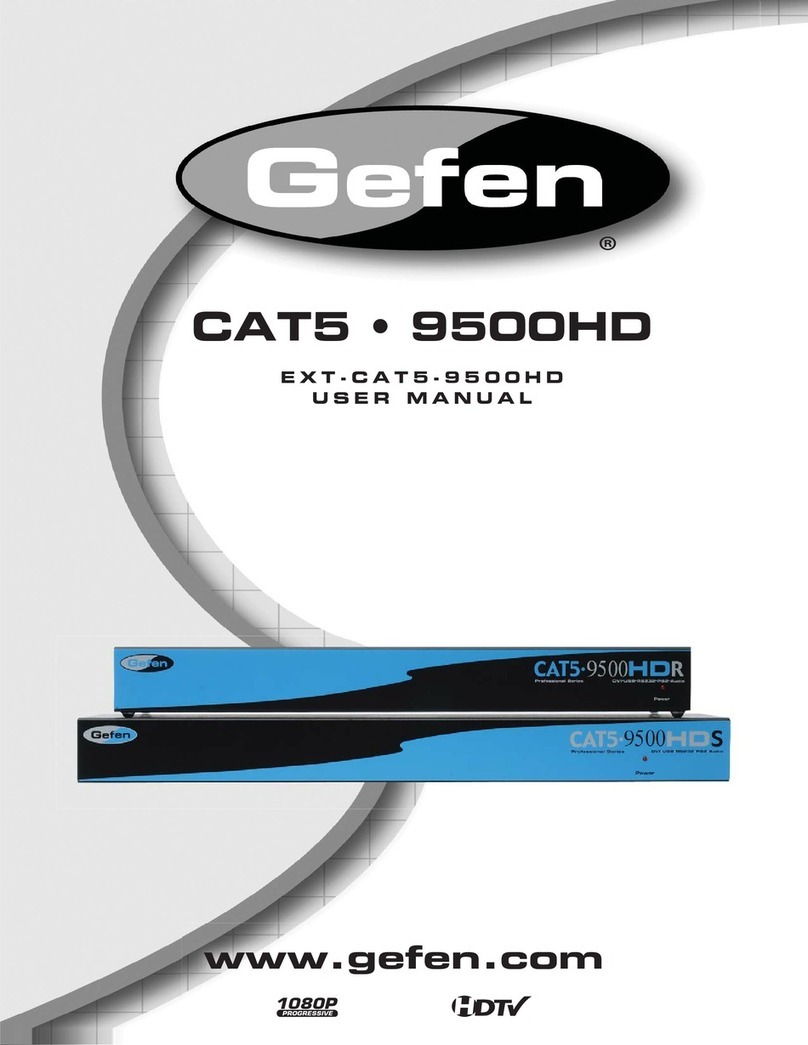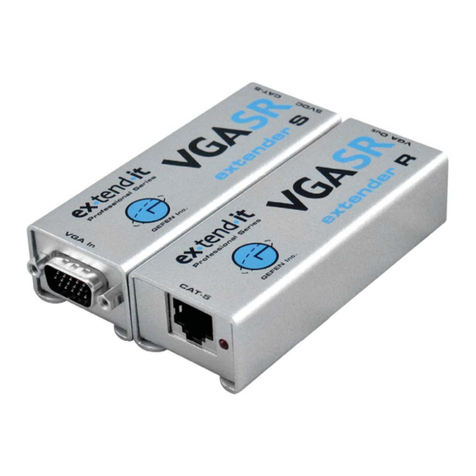7
The sender and receiver units both have sets of DIP switches located on the
underside of their casings. There is a piece of silver metallic tape that must be
removed to expose these DIP switches. Each unit carries a bank of 4 DIPswitches.
Dip switches 1 and 2 on the sending unit and DIP switch 1 on the receiving unit are
used in this procedure. By default, all DIP switches on the receiving units should
be in the OFF position (Auto EQ On). DIP switch 2 on the sending unit should be in
the ON position (No Boost). To turn off auto equalization, turn DIP switch 1 on the
receiving unit to the ON position (Auto EQ off). With this setting please follow the
steps below to equalize the picture.
1. Insert a small flat head tool into the trimpot on the receiver unit.
2. Turn the trimpot in a clockwise fashion until it comes to a stop. Do not force the
trim pot beyond this point. Doing so may break the trim pot.
3. Slowly turn the trimpot counter-clockwise in millimeter increments until the
image stabilizes and all video noise disappears.
4. Carefully remove the adjustment tool.
NOTE: If your cable run is beyond 130 feet, or the following steps do not produce
any video, it may be necessary to increase the boost from the sending unit. Use
the chart below to increase the boost by changing the sender DIP switches. Once
a new boost setting is set, repeat steps 1 through 4 from above.
Sender DIP Switch Settings
Setting Switch 1 Switch 2
No Boost (Default) OFF ON
Medium Boost OFF OFF
High Boost ON OFF
Not Used ON ON
Receiver DIP Switch Settings
Setting Switch 1 Switch 2
Manual EQ ON OFF
Auto EQ (Default) OFF OFF
Adjustment Guidelines:
1. Strong boost should not be used on stranded cables. Strong boosting will cause
pixels or no picture on these cables.
2. Using the wrong settings will not damage the units; it will either produce no image
or a noisy image.
3. To eliminate the possibility of cross talk and interference, cables must be
terminated with 568B scheduling. (See page 9 for details)
4. No Boost should be set when using Auto EQ.
SERVICE SWITCH USAGE GUIDE



